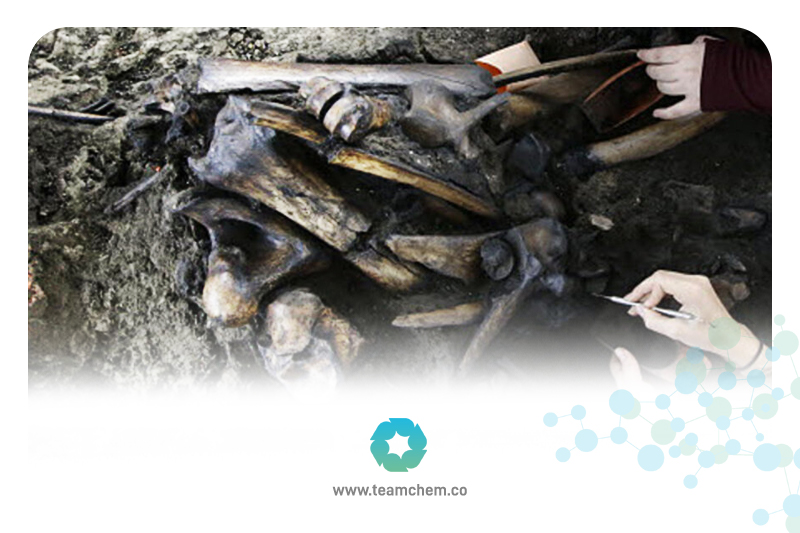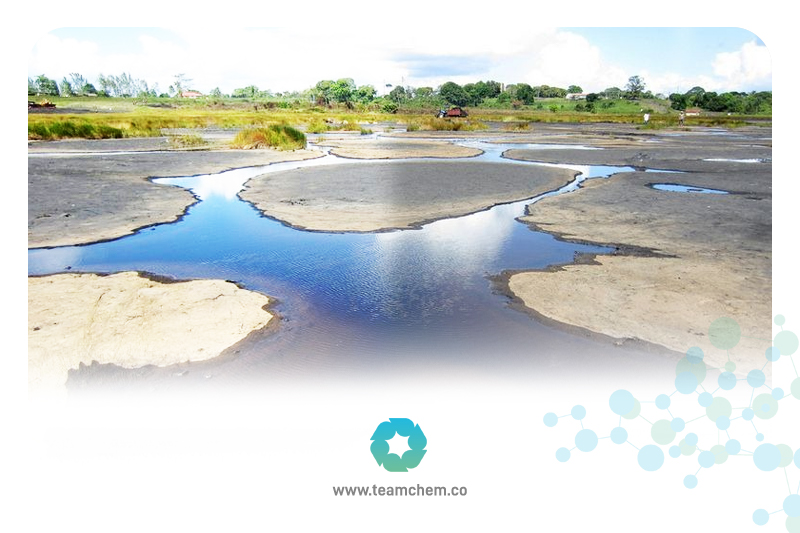Team Chemicals Explores The Fascinating World of Tar Pits
This image isn't from a post-apocalyptic flick about time-traveling mammoths taking a tar bath! It's a snapshot of a very real place—the La Brea Tar Pits in Los Angeles, California. These bubbling pools of asphalt are not just a tourist attraction; they're a window into an ancient world, teeming with prehistoric life whose stories are etched in the asphalt.
These tar pits, also known as asphalt or bitumen pits, are not unique to Los Angeles. They can be found across the globe, each one a time capsule offering glimpses into the evolution of life on Earth. More importantly, they are the hidden foundation of modern infrastructure, lying right beneath our feet and serving as a natural source for asphalt cement, a key component in road construction.
One of the most captivating sources of natural asphalt is the tar pit. These intriguing geological formations have captured the imagination of scientists, historians, and the public alike, serving as both a window into the past and a source of valuable resources for the present.
In this comprehensive guide, we will embark on a journey through the fascinating world of natural asphalt binders. We will delve into the depths of tar pits, uncovering their secrets and exploring their role in shaping our world. From ancient fossils to cutting-edge road construction techniques, we will uncover the rich history and diverse applications of this remarkable material.
By the end of this article, you'll hopefully not only have a deeper understanding of these natural phenomena but also a newfound appreciation for their significance in our world.
How Tar Pits Form?
Tar pits are natural asphalt lakes formed through a fascinating geological process. Their formation begins with the accumulation of organic matter, primarily microscopic marine organisms, in sedimentary basins over millions of years. Under intense heat and pressure deep underground, this organic matter transforms into crude oil.
This crude oil, being less dense than the surrounding rock, gradually migrates upwards through fissures and cracks in the earth's crust. As it reaches the surface, the lighter components of the oil, such as gasoline and kerosene, evaporate due to exposure to air and sunlight. What remains is a thick, sticky residue rich in heavier hydrocarbons - asphalt or bitumen.
This natural asphalt cement, often enriched with Gilsonite for added durability, accumulates in depressions or low-lying areas, gradually forming tar pits. The asphalt in these pits is viscous and can vary in consistency depending on temperature and composition. Some pits may have a relatively solid surface, while others may be more fluid, resembling a pool of thick liquid asphalt.
Are Tar Pits Hot?
I am terribly sorry to let your adventurous spirit down, but the answer is a definite no. Their temperature generally reflects the ambient temperature of the surrounding environment. However, the asphalt's dark color can cause it to absorb more solar radiation, making it feel warmer to the touch, especially on sunny days.
The formation of tar pits is a continuous process, with new asphalt constantly seeping up from below. This slow but steady replenishment is what makes these formations so unique and capable of preserving fossils for millennia.
Where Are Tar Pits Found?
Tar pits, while not as common as other geological formations, can be found in various corners of the world. Their distribution is primarily linked to regions with significant petroleum reserves and specific geological conditions that allow for the upward migration of crude oil. Some of the most famous and well-studied tar pits are located in:
La Brea Tar Pits (US)
This iconic site in the heart of Los Angeles, California is renowned for its extensive collection of Ice Age fossils, including mammoths, saber-toothed cats, and dire wolves. The La Brea Tar Pits are a testament to the preservative power of natural asphalt and offer invaluable insights into the region's ancient ecosystem.
McKittrick Tar Pits (US)
Located in the southern San Joaquin Valley, these tar pits have yielded a wealth of fossils, including the remains of mammoths, giant sloths, and extinct camels.
Carpinteria Tar Pits (US)
Situated along the California coast, these tar pits are known for their diverse fossil assemblage, including marine mammals, birds, and reptiles.
Binagadi Asphalt Lake (Azerbaijan)
This significant asphalt lake in Azerbaijan has been a source of natural asphalt for centuries and continues to be studied for its geological and paleontological significance.
Pitch Lake (Trinidad and Tobago)
This massive natural asphalt lake is the largest of its kind in the world. Its unique composition and properties have made it a valuable source of asphalt for road construction and other applications.
How Many Tar Pits Are There in The World?
If you are looking for an exact number (or even a rough estimate) then I should ask you to stop looking. Because the exact number of tar pits worldwide is difficult to quantify. While famous examples like the La Brea Tar Pits and Pitch Lake are well-documented, ongoing research and exploration continue to uncover new tar pit sites, especially in regions with significant petroleum reserves. Each new discovery expands our understanding of Earth's geological history and the diverse ecosystems that once thrived.
Tar Pit Fossils: Nature’s Death Trap, Humanity's Treasure Trove

Tar pits have earned the nickname "nature's death trap," for obvious reasons. But for paleontologists, they are treasure troves of scientific discovery. The unique properties of asphalt make it an exceptional preservative, trapping and preserving the remains of countless organisms that ventured into these sticky pools over millennia.
The fossilization process in tar pits begins when animals, lured by the appearance of water or simply by accident, become ensnared in the sticky asphalt. The more they struggle, the deeper they sink, eventually succumbing to exhaustion, starvation, or suffocation. Over time, the asphalt engulfs their bodies, shielding them from the elements and slowing down decomposition.
Plants, insects, and even microscopic organisms also fall victim to the tar pits. Pollen grains, seeds, and leaves become embedded in the asphalt, providing valuable clues about ancient plant life and the surrounding environment. Even bacteria and other microbes, trapped in the oxygen-deprived asphalt, can remain preserved for millions of years,offering insights into ancient microbial life that can be applied in fields like bioremediation.
What Happens If You Fall Into a Tar Pit?
Again, so sorry to disappoint your wild imaginations, but despite their ominous appearance and reputation, tar pits are not the instant death traps.They don't suck you down like quicksand, and rescue is possible.
Falling into a tar pit is a dangerous situation for these reasons:
Physical Challenges of Extrication
The primary danger of tar pits lies in their viscosity and stickiness. The thick asphalt can quickly immobilize a person or animal, making it extremely difficult to escape. The more you struggle, the more entangled you become, further hindering your ability to free yourself.
Direct Threats to Health
Dehydration, exposure to the elements, and the potential for hypothermia or hyperthermia can all pose serious threats to survival. In some cases, the accumulation of toxic gasses from decomposing organic matter within the pit can also be a concern.
While the prospect of falling into a tar pit is undoubtedly frightening, it's important to note that rescue is possible. Emergency responders utilize specialized techniques and equipment, similar to those used in industrial settings where asphalt is handled, to safely extricate individuals from tar pits. These methods may involve using ropes, harnesses, and even cranes to lift the trapped person out of the sticky asphalt.
From Tar Pits to Roads
While the allure of tar pits lies in their prehistoric past, their significance extends into the present and future of road construction. The understanding gleaned from these natural asphalt deposits has revolutionized the way we build and maintain our transportation infrastructure.
Evolution of Asphalt Use
Centuries ago, ancient civilizations recognized the value of natural asphalt seeping from tar pits. They used it as a sealant, adhesive, and waterproofing material. The first documented use of asphalt in road construction dates back to 625 B.C. in Babylon. However, it wasn't until the 19th century that refined asphalt binders became the cornerstone of modern road construction. Before we dig deeper into the history of asphalt use, let’s briefly talk about asphalt binders.
What is Asphalt Binder? Team Chemicals Explains
Asphalt binder, also known as asphalt cement, is the glue that binds together the aggregates in asphalt pavement.
Refined Asphalt Binders
For centuries, natural asphalt was directly harvested from tar pits and used in various applications, including road construction. Today, we primarily use refined asphalt binders derived from crude oil distillation. These binders are carefully engineered to meet specific performance requirements, ensuring the durability and longevity of asphalt pavements.
Tar Pits and Modern Science
Tar pits are not just relics of the past; they are active sites of ongoing scientific research and discovery. Geologists study the composition and properties of the asphalt, analyzing its chemical makeup and physical characteristics to better understand the geological processes that formed these deposits. Climatologists use tar pit data to reconstruct past climates and environmental conditions, providing valuable insights into climate change and its impacts on ecosystems.
In addition to studying fossils, researchers are also investigating the unique microbial communities that thrive within tar pits. These extremophiles, adapted to the harsh conditions of the asphalt environment, offer potential applications in biotechnology and environmental remediation.
The Role of Natural Asphalt Knowledge

The knowledge gained from studying natural asphalt deposits like tar pits has been invaluable in developing modern asphalt binders. By understanding the chemical composition and physical properties of natural asphalt, engineers have been able to create asphalt binders like those offered by TEAMChem that are more resistant to cracking, rutting, and moisture damage. These advancements have led to the creation of longer-lasting and more sustainable roads.
By understanding the properties of natural asphalt and incorporating this knowledge into our modern asphalt formulations, we are not only creating better roads but also paving the way for a more sustainable future. The use of recycled materials like asphalt millings and tire rubber in asphalt binders, a practice championed by companies like TEAMChem, helps reduce waste and conserve natural resources.
Bitumen Pits Bible: The Crash Course!

What is it?
Composition: A complex mix of hydrocarbons formed over millions of years from ancient organisms.
Types: Found as tar pits (liquid asphalt lakes), asphalt veins, or solid deposits.
Key Properties: Viscous, adhesive, waterproof, and surprisingly durable.
Where is it Found?
Tar Pits: Famous examples include La Brea Tar Pits (Los Angeles), Pitch Lake (Trinidad and Tobago), and McKittrick Tar Pits (California).
Global Distribution: Linked to areas with petroleum reserves and specific geological conditions.
Fun Fact: The Dead Sea contains natural asphalt that occasionally washes up on shore.
How is it Formed?
Origins: Microscopic marine organisms accumulate in sedimentary basins and transform into crude oil under heat and pressure.
Migration: Crude oil rises through the earth's crust, losing lighter components to evaporation, leaving behind sticky asphalt.
Tar Pit Formation: The asphalt accumulates in depressions, forming tar pits.
Why is it Valuable?
Fossil Record: Tar pits are exceptional fossil preservers, capturing ancient ecosystems in stunning detail.
Ancient Uses: Used by ancient civilizations for waterproofing, construction, and even mummification.
Modern Roads: Refined asphalt binders, inspired by natural asphalt, are the glue that holds roads together. (Bitumen for Road Construction)
Did You Know?
The oldest known use of asphalt dates back to 625 B.C. in Babylon.
Natural asphalt was used to waterproof Noah's Ark, according to some interpretations of the Bible.
The La Brea Tar Pits have trapped and preserved over 3.5 million fossils.
Asphalt can self-heal minor cracks, making it a sustainable road material.
Team Chemicals: Your Source for High-Performance Asphalt Binders
TEAMChem, a leading supplier of petrochemicals, understands the critical role that asphalt binders play in the construction and maintenance of our roadways. Leveraging our deep understanding of petroleum refining and chemical engineering, we offer a range of high-performance asphalt binders that deliver exceptional results. We are commitment to quality through:
Technical Expertise: Our team of experienced professionals is available to provide technical support and guidance on product selection and application.
Reliable Supply: We maintain a robust supply chain to ensure timely delivery of our products, minimizing disruptions to your projects.
Partner with TEAM Chemicals
Choosing the right asphalt binder is crucial for the success of your paving project. TEAMChem is your trusted partner,providing high-quality products and expert guidance to help you achieve optimal results. Contact us today to learn more about our comprehensive range of asphalt binders and how we can help you build roads that stand the test of time.